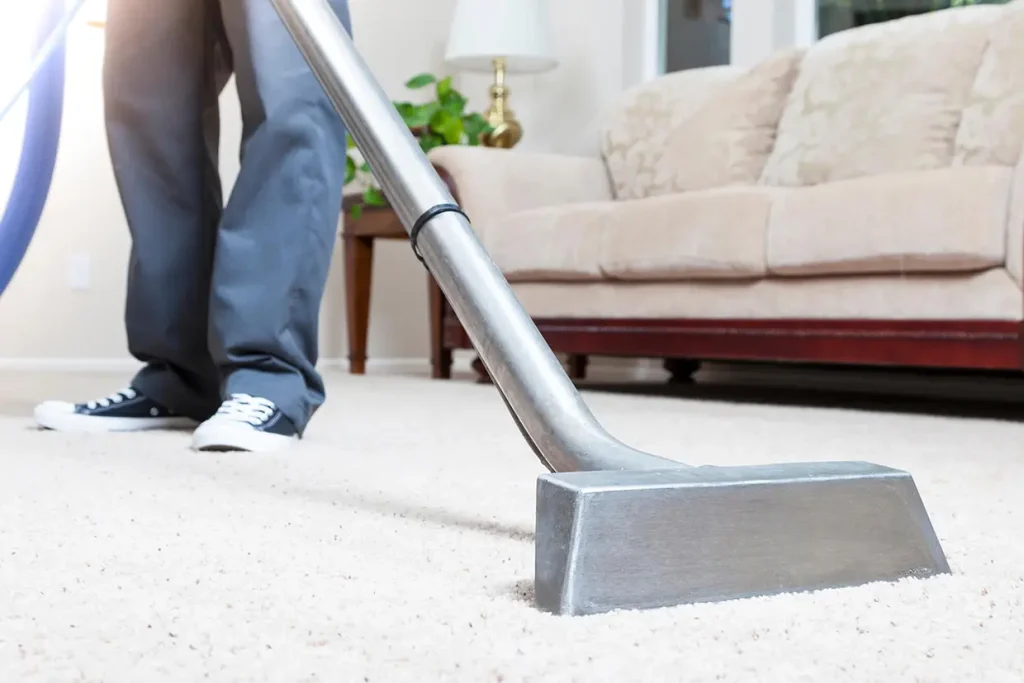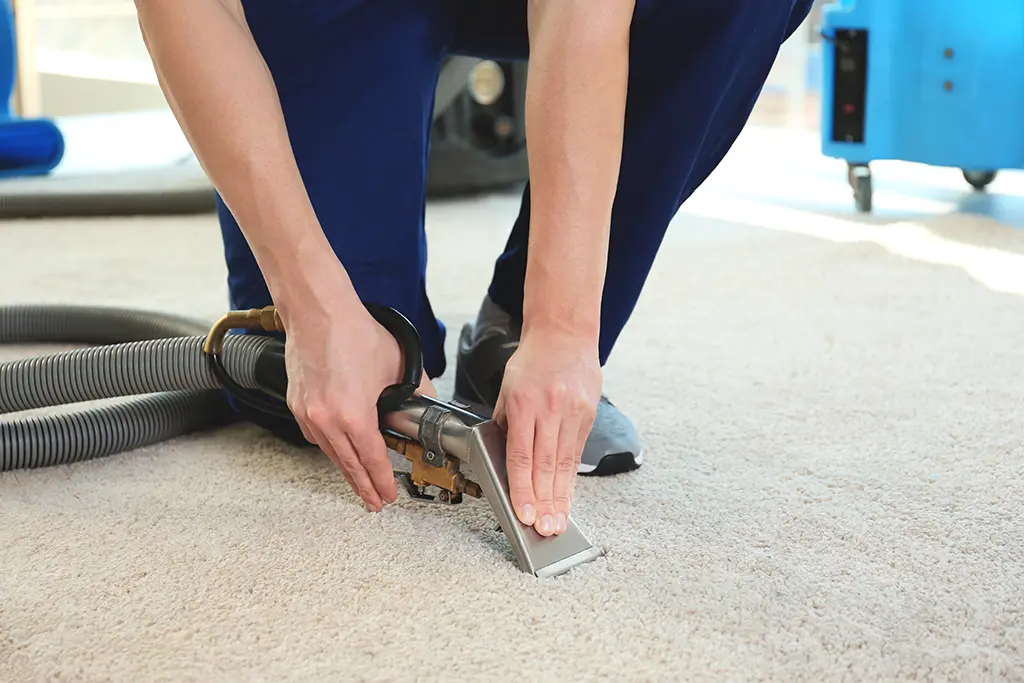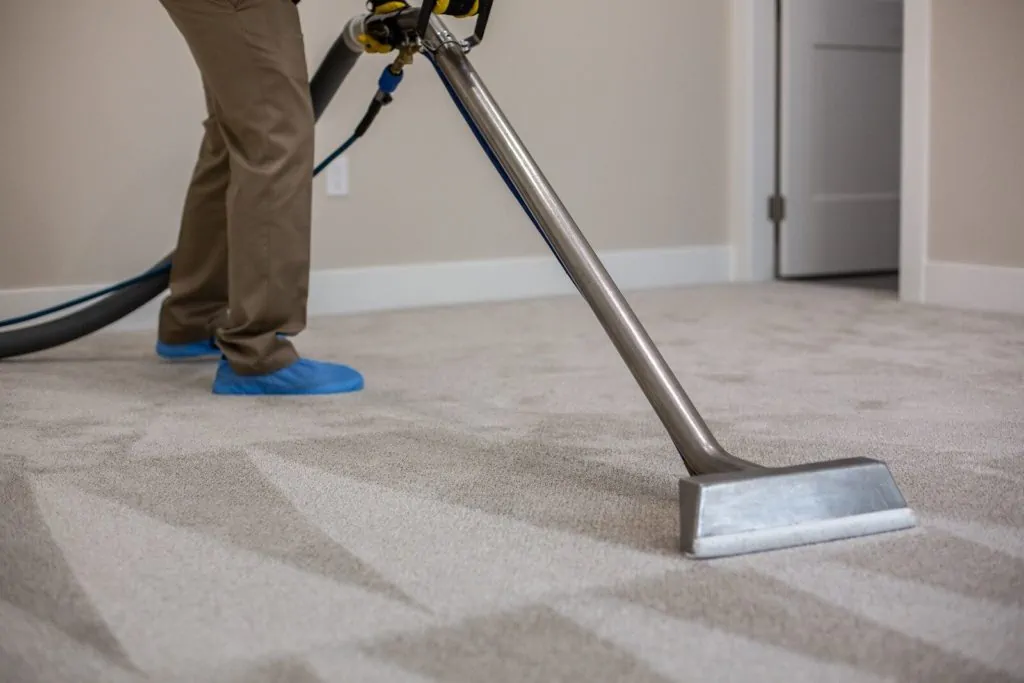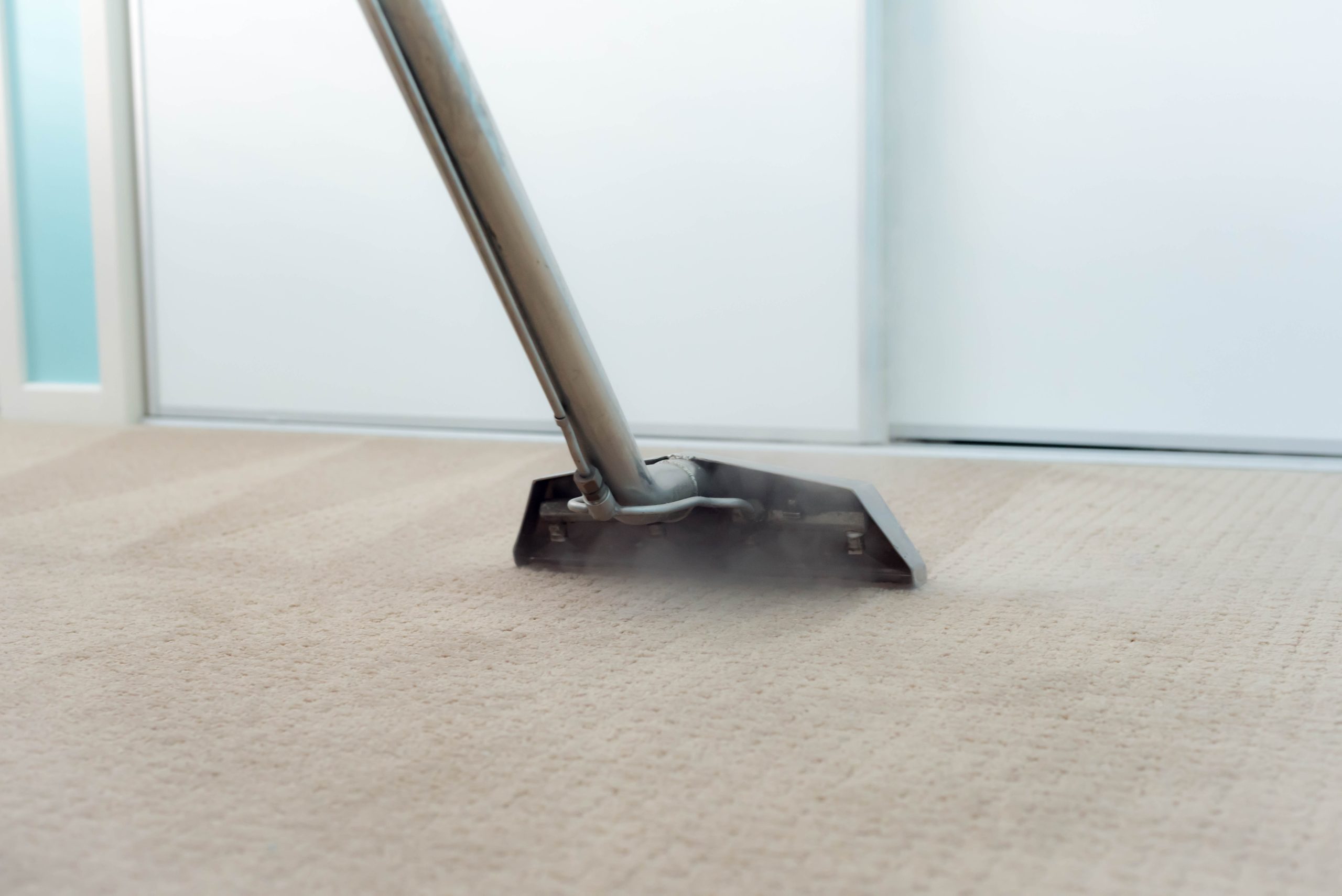Steam carpet cleaning is often hailed as the gold standard for keeping carpets fresh and spotless. It’s easy to see why—it’s a method that dives deep, tackling dirt, allergens, and bacteria lurking in your carpet fibers. But while steam cleaning has its merits, it’s not always the perfect solution for every situation.
If you’ve ever wondered whether steam carpet cleaning is the best option for your home, you’re not alone. Many homeowners are surprised to learn that this popular method has its share of downsides. From potential damage to certain carpet types to long drying times that might lead to mold issues, there’s more to consider than meets the eye.
In this post, we’ll take a closer look at the disadvantages of steam carpet cleaning and explore why it might not always be the right fit for your needs. Plus, we’ll share some alternative methods that could better suit your lifestyle and carpet type. Whether you’re looking to refresh your living room rug or tackle stubborn stains, this guide will help you make an informed choice.
The Drawbacks of Steam Carpet Cleaning

Steam carpet cleaning sounds like a dream solution for spotless carpets, but it’s not without its flaws. Depending on your carpet type, household needs, and expectations, you might find that this method leaves a bit to be desired. Let’s explore some of the key reasons why steam carpet cleaning isn’t always the best option.
a. Excessive Moisture Can Be a Problem
One of the most significant issues with steam carpet cleaning is the amount of moisture it uses. While the water helps loosen dirt and grime, it also soaks into the carpet fibers—and sometimes even the padding underneath. If not dried properly, this trapped moisture can lead to unpleasant side effects like mold and mildew growth, especially in humid environments.
Drying times can vary, but it’s not unusual for carpets to take 24 to 48 hours to dry completely after steam cleaning. That’s a long time to tiptoe around soggy floors or keep pets and kids off your carpets! For some households, the inconvenience of waiting simply isn’t worth it.
b. Risk of Damage to Delicate Carpets
Not all carpets are created equal, and some just don’t respond well to steam cleaning. Delicate or natural fibers, like wool or silk, can shrink, fade, or become misshapen when exposed to the high temperatures and moisture of steam cleaning. If you’re unsure about your carpet’s material, it’s essential to double-check before booking a steam cleaning session.
c. Cost and Equipment Considerations
Steam carpet cleaning often requires professional-grade equipment, which means higher costs for homeowners who opt for expert services. While renting equipment is an option, it’s not always easy to handle bulky machines or achieve professional-level results. If you’re on a budget, this method might feel like more of a splurge than a necessity.
d. Stains That Refuse to Budge
Contrary to popular belief, steam cleaning isn’t a miracle cure for every stain. Certain types of stains—like those caused by oil, grease, or dyes—can be especially stubborn and may not lift even with the help of steam. Worse, improper technique can spread the stain further, making it even harder to remove.
e. The Problem with Residue
If the cleaning solution isn’t fully extracted during the process, it can leave behind a sticky residue on your carpet. This residue can attract dirt and grime over time, making your freshly cleaned carpet look dirty again far sooner than expected.
While steam carpet cleaning does have its advantages, these drawbacks highlight why it’s not always the best choice for every home. Understanding these potential pitfalls can help you decide if it’s the right method for your carpet—or if it’s time to explore alternatives. Speaking of alternatives, let’s take a look at some in the next section!
Also Read: The Ultimate Guide to Carpet Cleaning: Expert Tips and Tricks for Spotless Floors
Alternative Carpet Cleaning Methods

If steam carpet cleaning isn’t the perfect fit for your needs, don’t worry—there are several other effective ways to keep your carpets looking their best. Each method has its own advantages and works better for certain situations, so it’s all about finding the right match for your home and lifestyle. Let’s take a closer look at some popular alternatives.
a. Dry Carpet Cleaning
As the name suggests, dry carpet cleaning uses little to no moisture, making it a fantastic choice if you’re concerned about long drying times or the risk of mold. This method typically involves applying a cleaning powder or compound to the carpet, which absorbs dirt and grime. Afterward, a specialized machine is used to remove the powder and debris.
- Pros: Quick drying time (usually within an hour) and safe for delicate or natural fibers.
- Cons: May not penetrate as deeply as steam cleaning and can sometimes leave behind residue if not done correctly.
b. Carpet Shampooing
Carpet shampooing is a tried-and-true method that’s great for removing tough stains and refreshing heavily soiled carpets. This process involves applying a foamy shampoo to the carpet and scrubbing it into the fibers with a rotary machine. Once the shampoo dries, it’s vacuumed up, taking the dirt with it.
- Pros: Excellent for tackling stubborn stains and revitalizing high-traffic areas.
- Cons: Longer drying times and the potential for residue if the shampoo isn’t thoroughly extracted.
c. Bonnet Cleaning
Bonnet cleaning focuses on the surface of the carpet, making it ideal for high-traffic areas that need a quick refresh. This method uses a cleaning solution applied to the carpet’s surface, followed by a rotating bonnet (a cloth pad) that absorbs dirt and grime.
- Pros: Quick and effective for spot cleaning or light maintenance.
- Cons: Doesn’t clean deep into the fibers and may leave dirt behind in heavily soiled carpets.
d. Encapsulation Cleaning
Encapsulation cleaning is a modern method that uses specialized detergents to capture and crystallize dirt particles, which are then vacuumed away. This technique is often favored in commercial settings because it’s efficient and dries quickly.
- Pros: Fast drying times and eco-friendly cleaning solutions.
- Cons: May not be as effective for deep-cleaning heavily soiled carpets.
Choosing the Right Method for You
Each carpet cleaning method has its own strengths, so the right choice depends on your carpet type, cleaning needs, and time constraints. For instance, dry cleaning or encapsulation might be ideal for delicate fibers or a quick refresh, while shampooing can tackle tougher stains and dirt buildup.
If you’re unsure which approach to take, consulting a professional can save you time and effort. They’ll help you assess your carpet’s needs and recommend the best cleaning method for your home. With so many options available, there’s no need to settle for a method that doesn’t work for your lifestyle or carpet type!
When Steam Carpet Cleaning Is Still a Good Option

Despite its drawbacks, steam carpet cleaning remains a powerful tool in the carpet care arsenal—especially when used in the right circumstances. While it’s not ideal for every carpet or situation, there are times when steam cleaning truly shines. Let’s explore a few scenarios where it might still be your best bet.
a. When Allergens and Bacteria Are a Concern
If you’re dealing with a household full of allergy sufferers or have pets that leave dander and bacteria behind, steam carpet cleaning can be a game-changer. The high-temperature steam doesn’t just remove dirt; it sanitizes your carpets, killing bacteria, dust mites, and other allergens. This makes it an excellent option for creating a healthier living environment.
b. Deep Cleaning for Heavily Soiled Carpets
When your carpets are looking worse for wear after months (or years) of neglect, steam cleaning can provide the deep refresh they need. Its ability to penetrate deep into the carpet fibers means it can tackle embedded dirt and grime that other methods might miss.
c. Eco-Friendly Cleaning Without Harsh Chemicals
If you’re trying to reduce the use of harsh chemicals in your home, steam carpet cleaning offers a greener alternative. It primarily relies on water and heat to clean, making it a more eco-conscious choice for households aiming to minimize chemical exposure.
d. Routine Maintenance for Synthetic Carpets
Synthetic carpets, such as nylon or polyester, tend to handle the heat and moisture of steam cleaning well. If your home features these types of carpets, regular steam cleaning can help extend their lifespan by keeping them free from dirt and debris buildup.
e. Professional Expertise Can Make a Difference
Steam carpet cleaning isn’t without its challenges, but when performed by a skilled professional, many of the potential pitfalls can be avoided. Professionals have the knowledge and equipment to control moisture levels, prevent residue, and ensure a thorough clean. This makes steam cleaning a viable option for those who prefer to leave carpet care to the experts.
While steam carpet cleaning isn’t perfect, there are times when its benefits outweigh the drawbacks. If your home faces specific challenges like allergens, deep dirt, or the need for eco-friendly cleaning, steam cleaning could be the right choice—especially when handled by a professional. The key is knowing when it’s the best fit for your carpets and your lifestyle!
Tips for Choosing the Right Carpet Cleaning Method

Choosing the best carpet cleaning method can feel overwhelming with so many options available. Should you go for steam carpet cleaning, dry cleaning, or another approach entirely? The right decision depends on a few key factors that are unique to your home, carpet type, and cleaning goals. Here’s a simple guide to help you make an informed choice.
a. Consider Your Carpet Type
Not all carpets respond well to steam cleaning. While synthetic fibers like nylon and polyester can handle the heat and moisture, delicate materials like wool or silk may shrink, discolor, or weaken. Always check your carpet’s care instructions or consult with a professional to determine the safest cleaning method.
b. Evaluate the Stains and Dirt Levels
The type of stains and dirt on your carpet plays a big role in choosing the right method. Steam cleaning is great for general dirt and bacteria but might struggle with oil-based stains or heavy grease. If you’re dealing with specific types of stains, like wine or ink, methods like shampooing or spot treatments might yield better results.
c. Think About Time and Convenience
How much time do you have to wait for your carpets to dry? If you need quick results, dry cleaning or encapsulation cleaning might be a better choice since they have much shorter drying times than steam cleaning. On the other hand, if time isn’t a concern, steam cleaning can deliver a deep and thorough clean.
d. Assess the Risk of Moisture Issues
If you live in a humid area or have a history of mold problems, steam carpet cleaning might not be the best fit. Excess moisture can linger in the carpet fibers and padding, potentially leading to mildew or mold growth. Opt for a low-moisture method to avoid this risk.
e. Budget Matters, Too
Professional steam carpet cleaning can be a bit pricey, and renting the equipment still requires time and effort. Consider your budget and whether the cleaning method you’re considering provides the best value for your investment. Dry cleaning or other alternatives might be more cost-effective in some cases.
f. Consult a Professional for Guidance
If you’re feeling uncertain, a carpet cleaning professional can be an invaluable resource. They can evaluate your carpet’s condition, identify the type of stains you’re dealing with, and recommend the best cleaning method. Sometimes, their expertise makes all the difference in achieving a spotless, fresh carpet.
Choosing the right carpet cleaning method doesn’t have to be complicated. By considering your carpet type, the level of dirt or stains, and your personal preferences, you can select the approach that works best for your home. Whether you go with steam carpet cleaning or an alternative, the goal is always the same—a cleaner, healthier space you’ll love walking into!
Conclusion
Steam carpet cleaning has earned its reputation as a powerful and popular method for tackling dirt and allergens deep within your carpets. However, as we’ve explored, it’s not a one-size-fits-all solution. From excessive moisture and long drying times to potential damage to delicate carpet fibers and the challenge of stubborn stains, there are clear reasons why steam carpet cleaning isn’t always the best option.
When deciding on the right cleaning method for your home, it’s important to weigh the pros and cons based on your carpet type, household needs, and budget. Alternatives like dry carpet cleaning or professional stain removal services might better suit your situation, especially if you’re concerned about moisture or time constraints.
If you’re unsure about the best approach for keeping your carpets fresh and clean, don’t hesitate to reach out to a professional for guidance. A trusted carpet cleaning expert can help assess your needs and recommend the most effective solution. After all, a clean carpet doesn’t just look great—it creates a healthier, more comfortable space for your family.
Ready to explore your options? Contact a local carpet cleaning professional today to find the perfect method for your home, or check out our related posts for more expert tips and insights!

